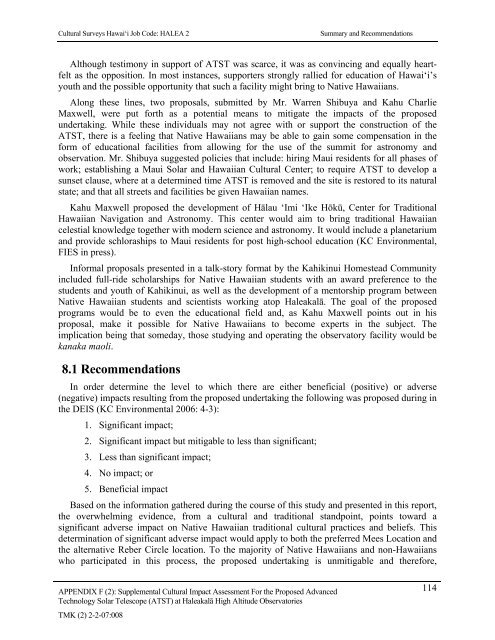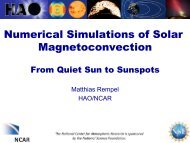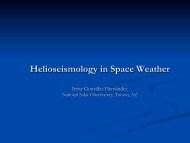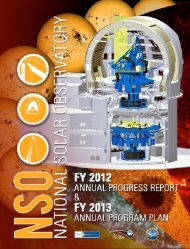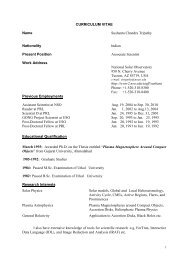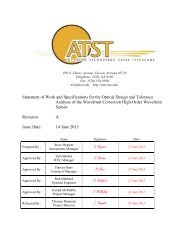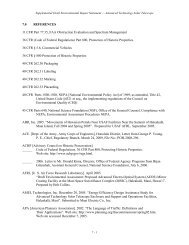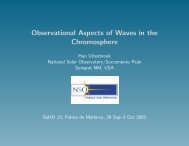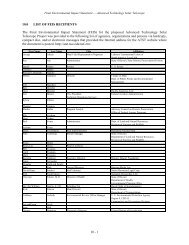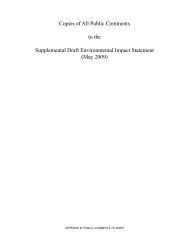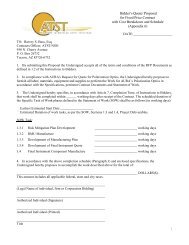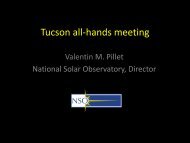F2 - ATST
F2 - ATST
F2 - ATST
Create successful ePaper yourself
Turn your PDF publications into a flip-book with our unique Google optimized e-Paper software.
Cultural Surveys Hawai‘i Job Code: HALEA 2Summary and RecommendationsAlthough testimony in support of <strong>ATST</strong> was scarce, it was as convincing and equally heartfeltas the opposition. In most instances, supporters strongly rallied for education of Hawai‘i’syouth and the possible opportunity that such a facility might bring to Native Hawaiians.Along these lines, two proposals, submitted by Mr. Warren Shibuya and Kahu CharlieMaxwell, were put forth as a potential means to mitigate the impacts of the proposedundertaking. While these individuals may not agree with or support the construction of the<strong>ATST</strong>, there is a feeling that Native Hawaiians may be able to gain some compensation in theform of educational facilities from allowing for the use of the summit for astronomy andobservation. Mr. Shibuya suggested policies that include: hiring Maui residents for all phases ofwork; establishing a Maui Solar and Hawaiian Cultural Center; to require <strong>ATST</strong> to develop asunset clause, where at a determined time <strong>ATST</strong> is removed and the site is restored to its naturalstate; and that all streets and facilities be given Hawaiian names.Kahu Maxwell proposed the development of Hālau ‘Imi ‘Ike Hōkū, Center for TraditionalHawaiian Navigation and Astronomy. This center would aim to bring traditional Hawaiiancelestial knowledge together with modern science and astronomy. It would include a planetariumand provide schloraships to Maui residents for post high-school education (KC Environmental,FIES in press).Informal proposals presented in a talk-story format by the Kahikinui Homestead Communityincluded full-ride scholarships for Native Hawaiian students with an award preference to thestudents and youth of Kahikinui, as well as the development of a mentorship program betweenNative Hawaiian students and scientists working atop Haleakalā. The goal of the proposedprograms would be to even the educational field and, as Kahu Maxwell points out in hisproposal, make it possible for Native Hawaiians to become experts in the subject. Theimplication being that someday, those studying and operating the observatory facility would bekanaka maoli.8.1 RecommendationsIn order determine the level to which there are either beneficial (positive) or adverse(negative) impacts resulting from the proposed undertaking the following was proposed during inthe DEIS (KC Environmental 2006: 4-3):1. Significant impact;2. Significant impact but mitigable to less than significant;3. Less than significant impact;4. No impact; or5. Beneficial impactBased on the information gathered during the course of this study and presented in this report,the overwhelming evidence, from a cultural and traditional standpoint, points toward asignificant adverse impact on Native Hawaiian traditional cultural practices and beliefs. Thisdetermination of significant adverse impact would apply to both the preferred Mees Location andthe alternative Reber Circle location. To the majority of Native Hawaiians and non-Hawaiianswho participated in this process, the proposed undertaking is unmitigable and therefore,APPENDIX F (2): Supplemental Cultural Impact Assessment For the Proposed AdvancedTechnology Solar Telescope (<strong>ATST</strong>) at Haleakalā High Altitude ObservatoriesTMK (2) 2-2-07:008114


